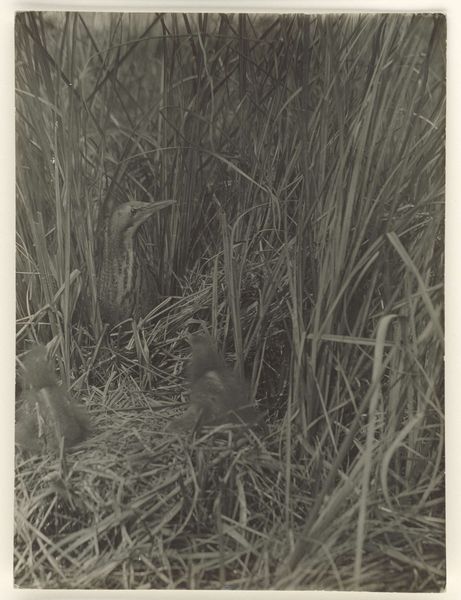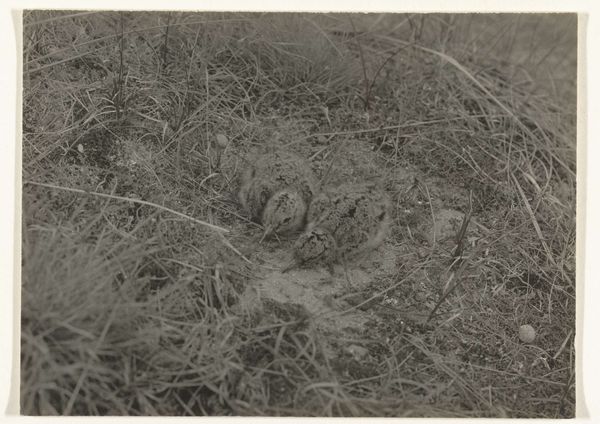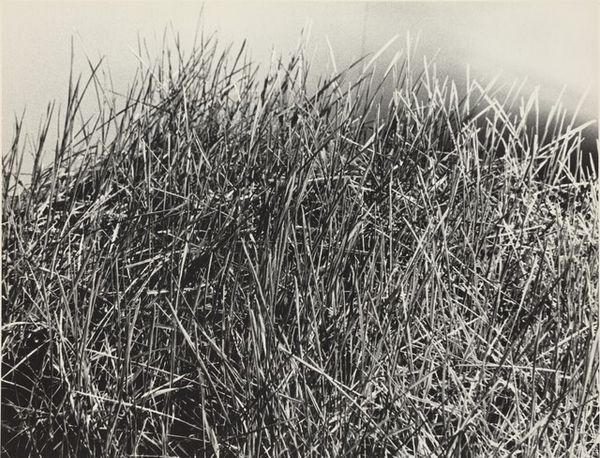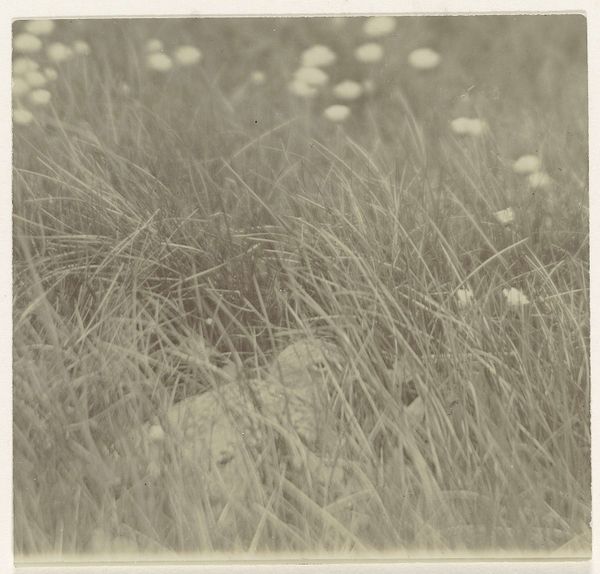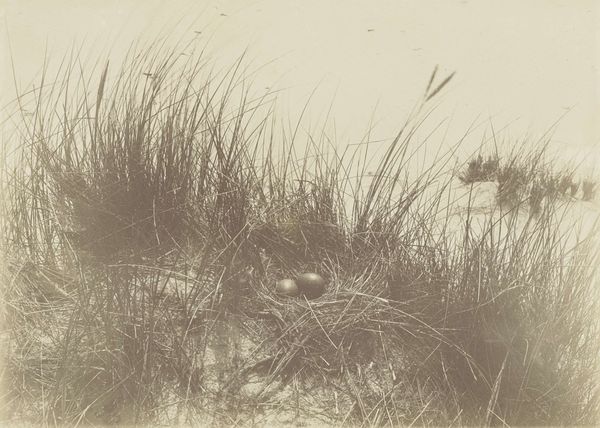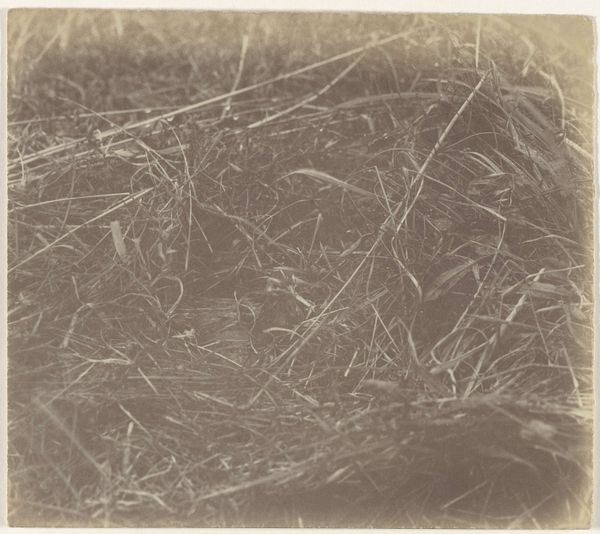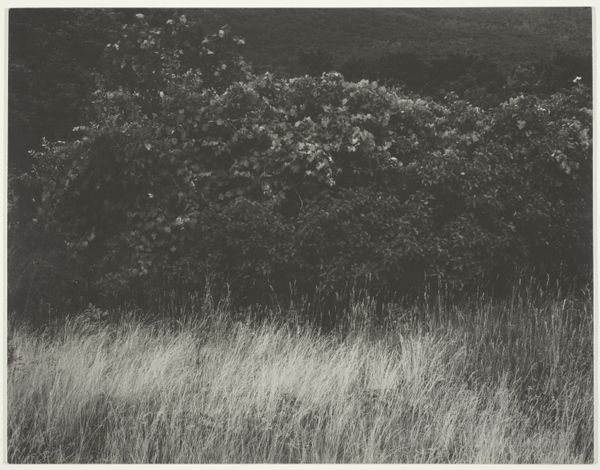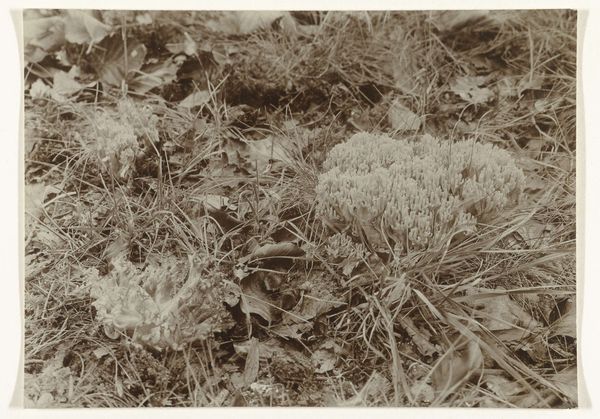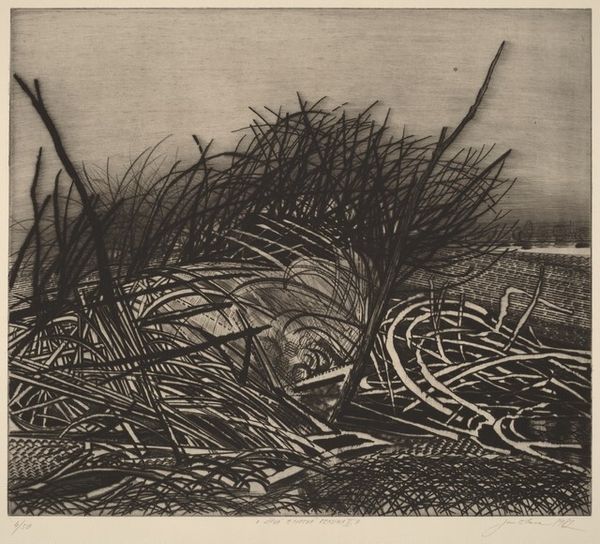
print, photography
#
portrait
# print
#
organic shape
#
landscape
#
photography
#
watercolor
#
realism
Dimensions: height 169 mm, width 222 mm
Copyright: Rijks Museum: Open Domain
Richard Tepe made this photograph of a brooding curlew, sometime in the late 19th or early 20th century, using a process that yields a soft, sepia-toned print. The way the light catches the dry grasses, it’s all about texture. Tepe is working with all these different tones to create a sense of depth and layering, which gives the image a kind of tactile quality. I’m thinking about how the physicality of the medium – the way the light interacts with the chemicals on the paper – shapes our experience. Look at the intricate patterns on the bird’s feathers, how each mark seems to blend seamlessly into the surrounding environment. It’s as if the bird is becoming one with the landscape, dissolving into the earth. Thinking about the formal language, I am reminded of the landscape paintings of the Barbizon School. Like them, Tepe is concerned with naturalism and the beauty of the everyday. Art is just this conversation across time. It’s about embracing ambiguity, not getting stuck on one fixed idea.
Comments
No comments
Be the first to comment and join the conversation on the ultimate creative platform.
